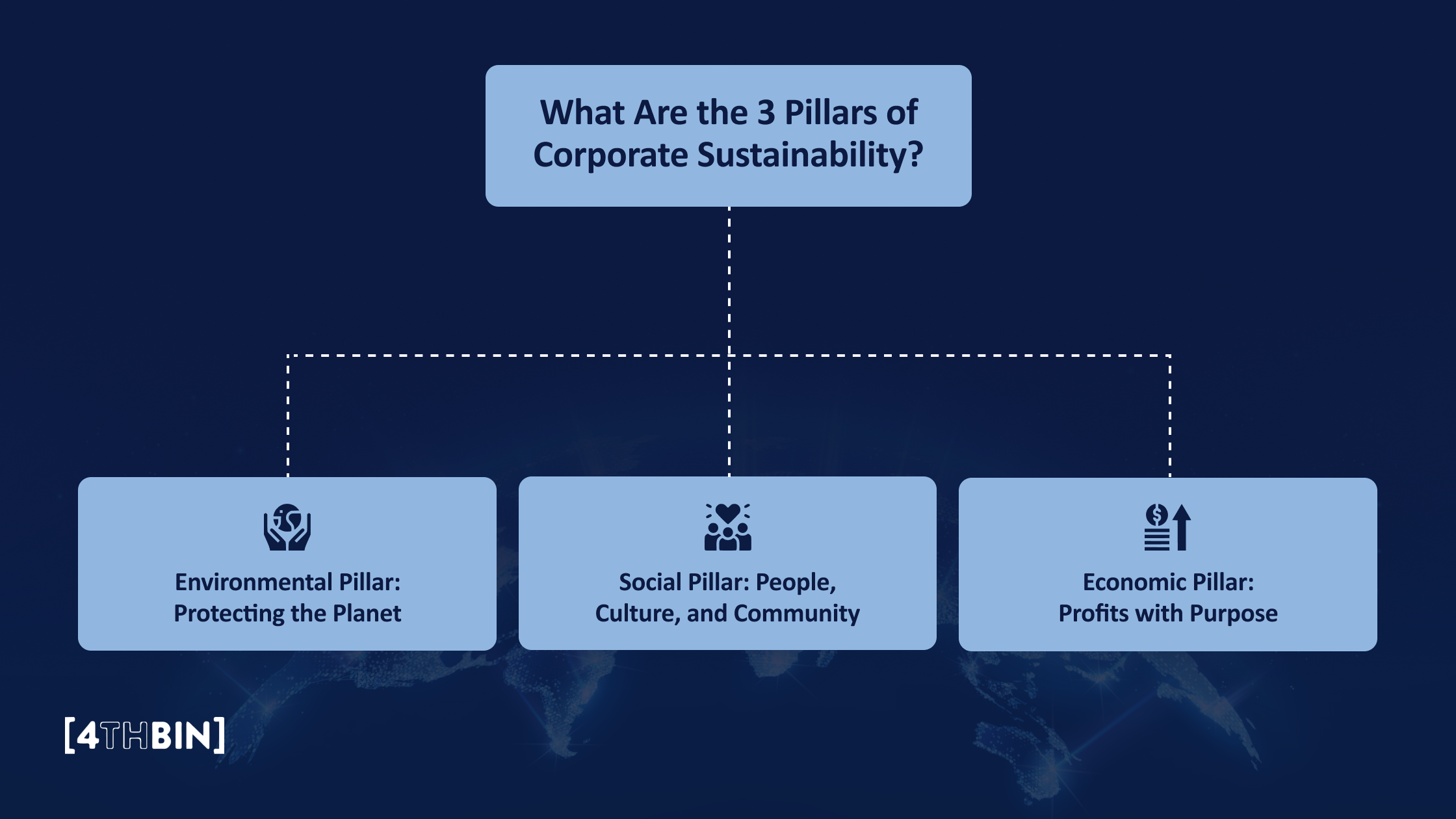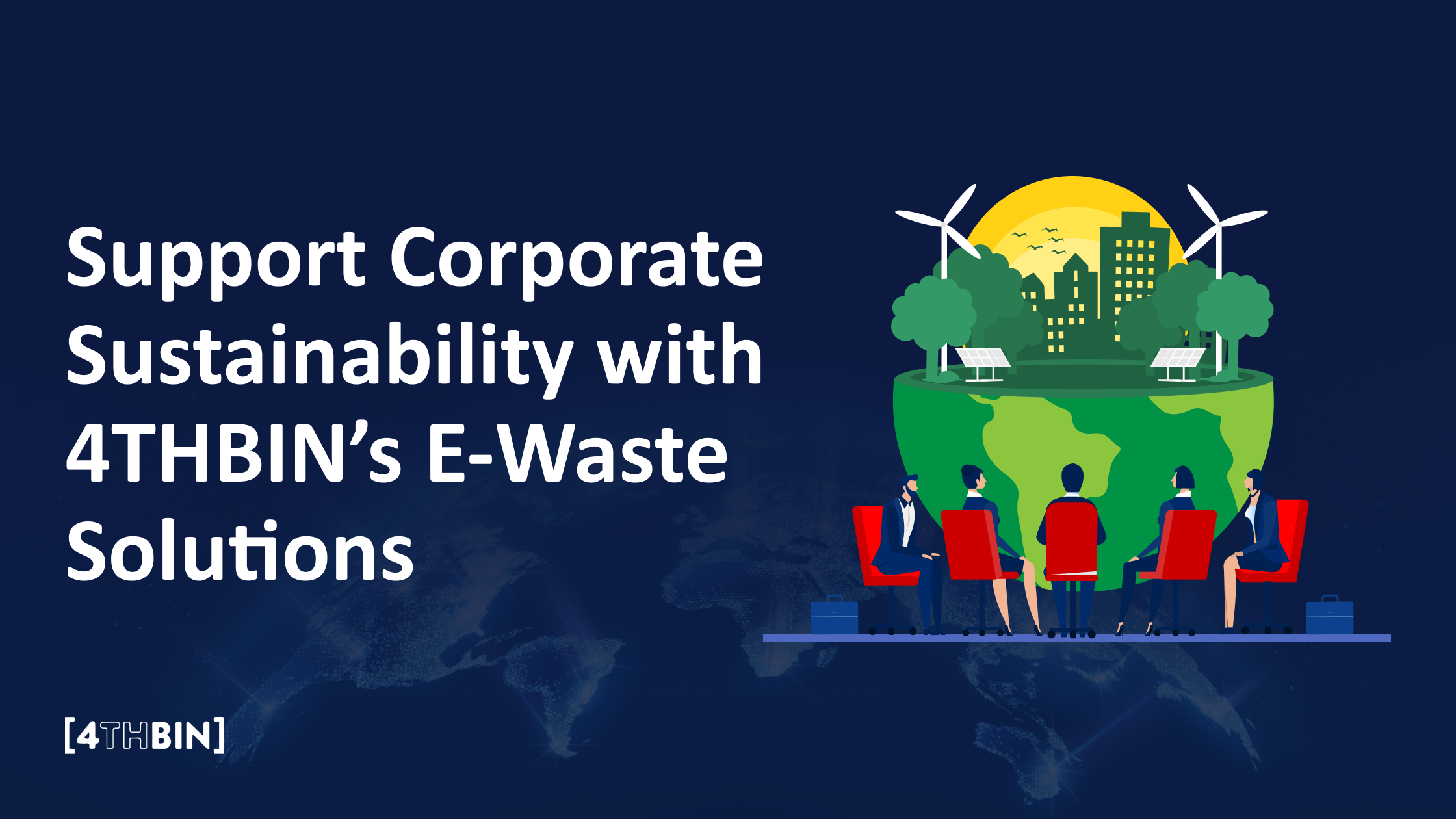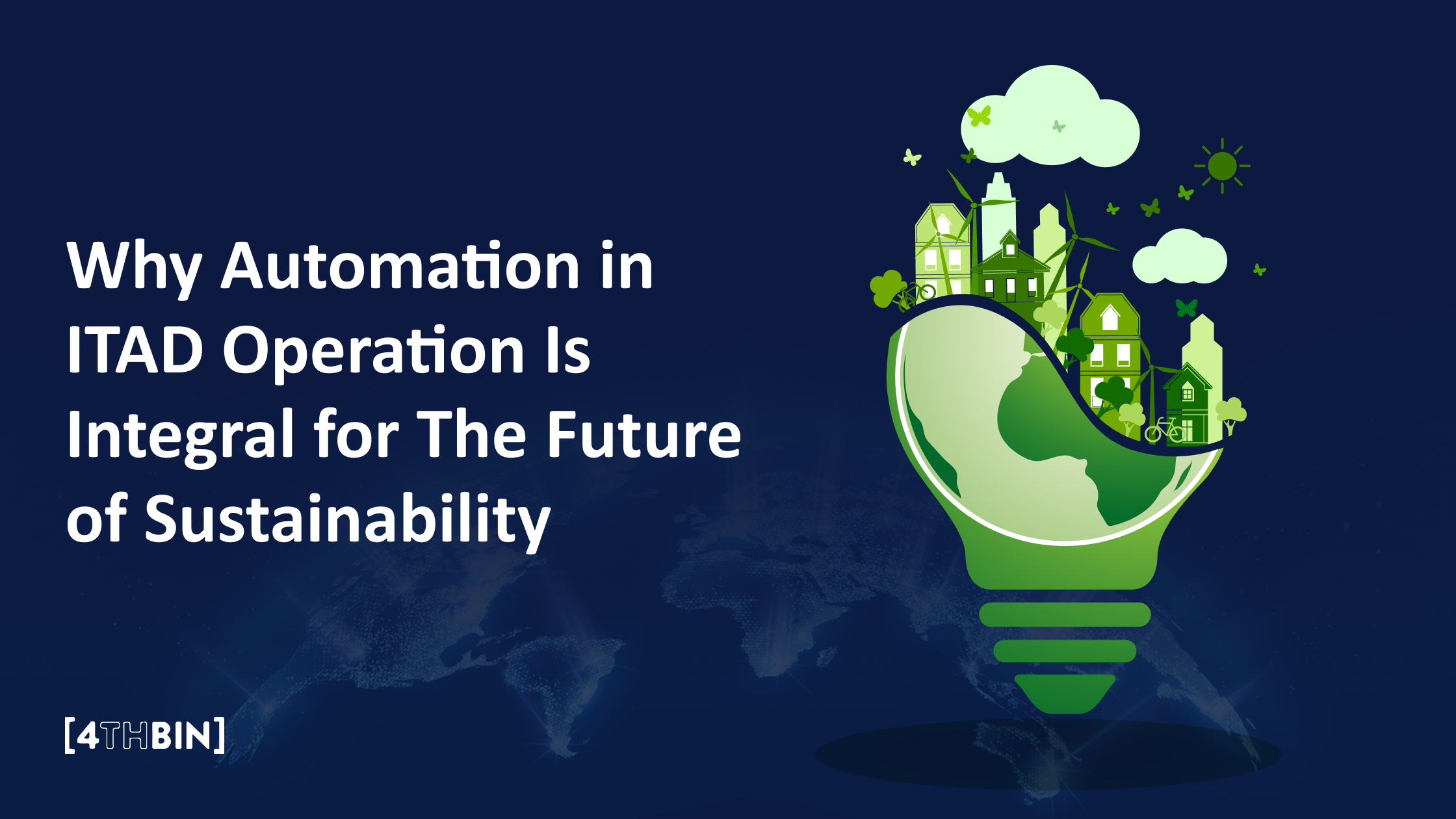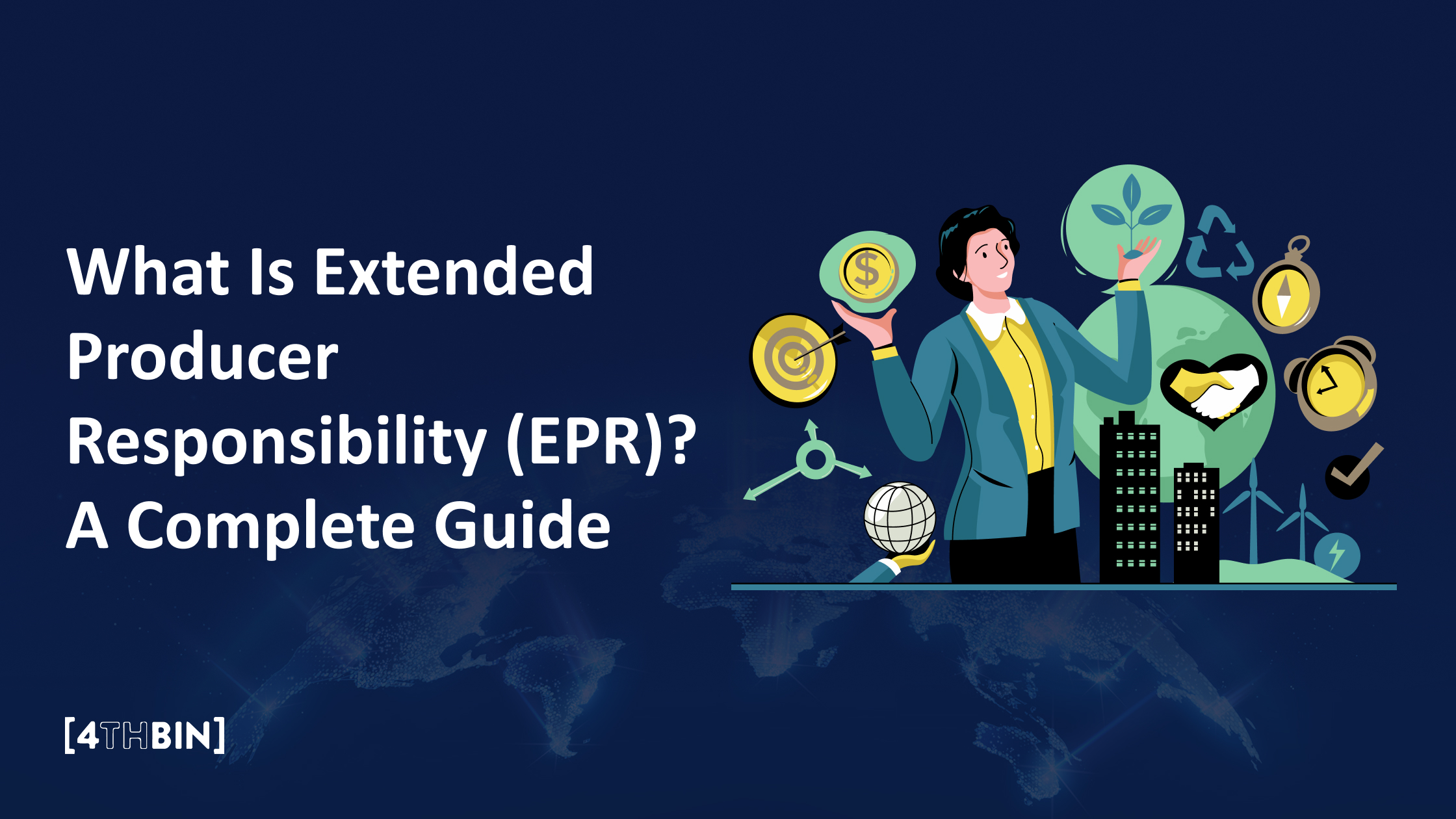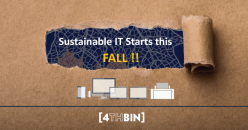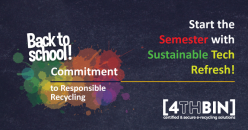Pillars of Corporate Sustainability Explained: What ESG Means for Your Business
Can a business continue to thrive if it damages the environment that supports it?
In 2024, global carbon dioxide emissions reached a new high of 41.6 billion metric tons, rising from 40.6 billion the previous year. Much of this came from fossil fuel consumption.
These numbers reflect the real and growing impact of current business practices. Sustainability has become a measurable standard that boards, regulators, investors, and clients expect firms to meet.
Today, long-term growth is tied to how well an organization aligns its operations with environmental, social, and economic responsibilities. These areas form the structure for what is now known as corporate sustainability.
Businesses that ignore this shift risk losing trust, value, and relevance. Those who act purposefully stand to gain resilience, reputation, and future stability. This begins with understanding and applying the three pillars that support sustainable business.
What Are the 3 Pillars of Corporate Sustainability?
A sustainable business approach balances purpose with performance. It supports long-term outcomes by aligning core strategies with three areas: environmental impact, social responsibility, and economic integrity.
Known as the three-pillar model, this framework is used across industries to guide decisions, reduce risk, and meet stakeholder expectations.
3 Pillars of Corporate Sustainability
- Environmental – Focuses on reducing harm to ecosystems. This includes energy use, emissions control, resource efficiency, and responsible waste practices.
- Social – Addresses how businesses treat employees, engage with communities, and ensure safety, inclusion, and fair labor within the supply chain.
- Economic – Centers on transparent governance, ethical financial practices, regulatory compliance, and the creation of sustainable financial value.
An example of this model is the EPA’s Smart Growth Program. Introduced in 1998, this initiative supports communities in designing growth plans that promote environmental protection, public health, economic opportunity, and accessible housing.
In addition, a 2024 global survey showed that sustainability clauses in Requests for Proposals (RFPs) have become the most widely adopted practice within the international meetings industry. This shows how sustainability has moved from a mission statement into procurement, strategy, and day-to-day business operations.
Firms that adopt these pillars with discipline are better positioned to meet modern standards, increase stakeholder confidence, and build lasting business models.
Environmental Pillar: Protecting the Planet
Firms that cause long-term damage to the planet now face higher risk, less trust, and more cost. Business leaders no longer view environmental responsibility as a side issue, including how they handle electronic waste.
In 2024, a survey showed that 39% of C-level executives saw climate change response as the main gain from their sustainability plans. But this shift isn’t about image. It’s about cost control, risk reduction, and securing access to capital.
Smart firms act early. They design low-waste systems, reduce energy use, and rethink supply chains—including how devices are sourced, maintained, and disposed of. Electronics have a lifecycle. Tracking what you buy, how long it lasts, and how it’s retired is now part of the sustainability equation.
E-waste recycling plays a vital role in this. Disposing of outdated hardware through certified recyclers—especially those with R2v3 or e-Stewards certification—ensures data security, regulatory compliance, and environmental protection. It’s not just the right thing to do; it’s the smart thing to do.
Simple changes scale fast. Switching to energy-efficient devices, reusing IT assets where possible, and retiring end-of-life equipment through verified recycling partners all reduce landfill impact and cut operating costs. Over time, these efforts show clients, investors, and regulatory bodies measurable results.
It helps to set firm goals: measure the weight of retired electronics per employee, track the percentage of hardware reused, and monitor how much is diverted from landfills. Use these insights in clear, verified, and public reports.
Smart firms take it further. They commit to third-party sustainability audits, use tools like Life Cycle Assessments (LCAs), and partner with recyclers that offer full traceability and environmental impact data.
Sustainability starts with how space is used—but it’s just as much about what fills that space. Servers, monitors, phones, batteries: they all have a footprint. Could your tech infrastructure run with less energy? Could decommissioned devices be refurbished or recycled responsibly? Could your e-waste feed another company’s materials stream?
A sustainability audit every six months, grounded in real usage and disposal data, helps guide these choices. What matters is not the claims but the action, the proof, and the long-term strategy.
Handled right, e-waste recycling does more than protect the planet. It protects the business. It builds trust, reduces exposure, and creates a roadmap to thrive in a world where environmental responsibility is no longer optional.
Social Pillar: People, Culture, and Community
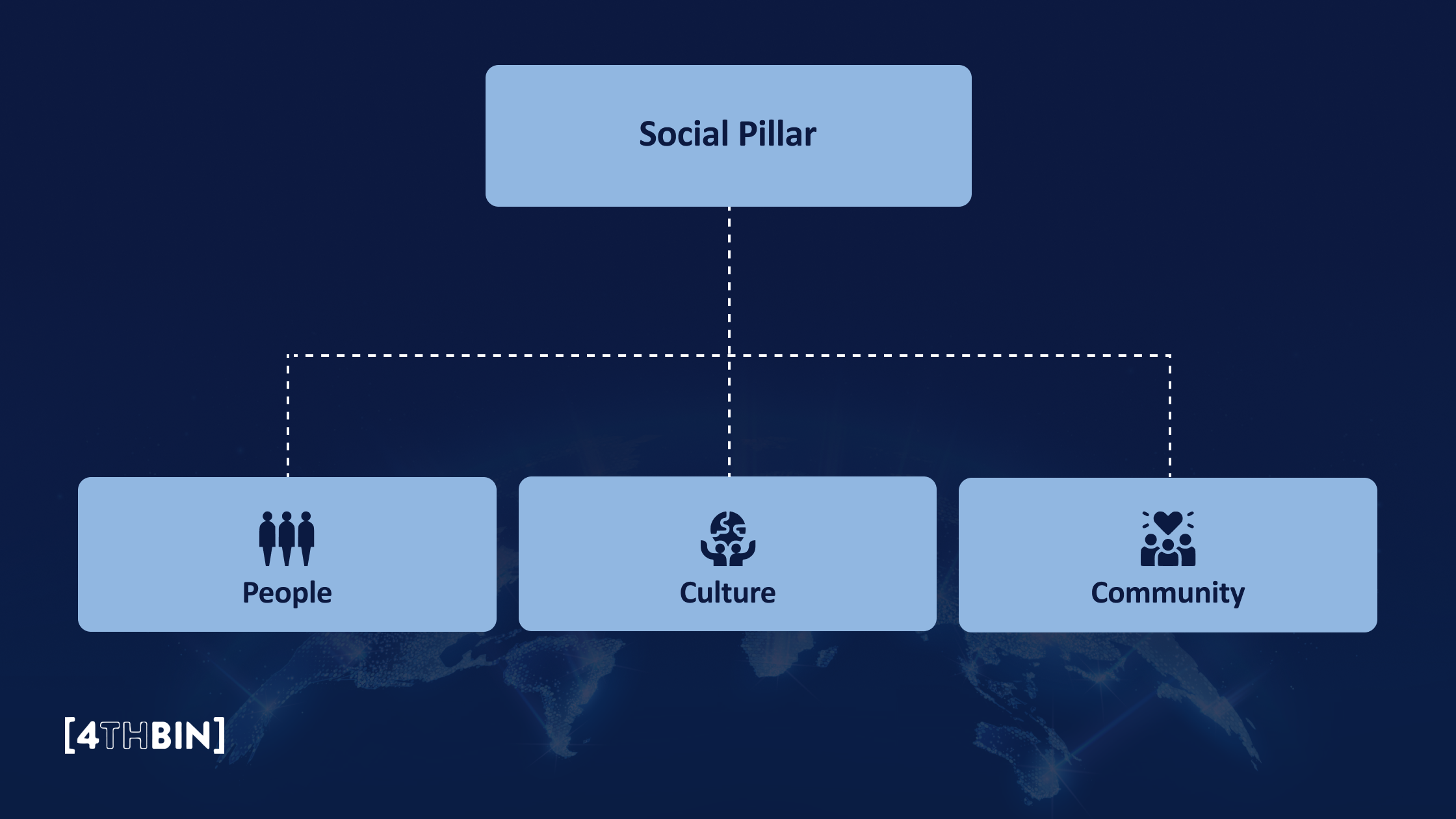
What does it cost a firm to lose the trust of its team, its users, or the public? The social pillar is not a soft part of business—it’s foundational. It shapes who joins your company, who stays, and who buys.
A 2024 study found that 78% of consumers want brands to do more to shape a fair and green world. If they don’t see action, they switch. This isn’t a passing trend—it’s a shift in values that’s tied directly to how people now spend.
To meet this shift, firms must act with care—not just in what they sell, but in how they treat the people and communities who keep them running. It starts inside. Fair pay, safe work conditions, and real paths to grow aren’t perks—they’re the baseline. Create systems where staff can speak up safely. Build in flexible schedules. Make upskilling simple and accessible. These actions grow trust, raise performance, and reduce turnover.
E-waste touches this, too. How your company handles old tech signals how it values people and the planet. Are devices retired responsibly—or sent to places where informal workers sort them in unsafe conditions? Partnering with certified e-waste recyclers helps ensure your electronics don’t harm vulnerable communities. This isn’t just environmental—it’s social responsibility.
Consumers and communities notice. Show them what your firm stands for. Hire locally. Support nearby schools or nonprofits. Invest in shared green spaces. A company that doesn't engage with the people around it will eventually lose relevance—and market share.
Look at your supply chain. Do you know where your electronics came from? Who made them? Were they paid fairly and treated safely? The same applies when these devices reach the end of their life. If your e-waste ends up overseas in unsafe, unregulated dumps, that’s a social risk—and a reputational one.
One weak link in the chain—whether in sourcing or disposal—can cause a ripple that spreads fast. But when companies align their practices with social and environmental ethics, they earn lasting trust.
Sustainability isn’t just about clean air or lower emissions. It’s about the people behind every product, service, and decision. When e-waste is handled with care—from procurement to disposal—it shows your business sees the full picture: the planet, the people, and the path forward.
Economic Pillar: Profits with Purpose
An organization that doesn’t earn will not last. But gain at the cost of the planet or people will not last either. The economic pillar is about how money is made, used, and reported. In an era where many claim to be green, only those who back it up with clear data and audited financials earn lasting trust and pricing power.
Take a simple example. A New York-based firm spends $100,000 annually on electricity. An audit reveals $22,000 of that goes to lighting. Switching to LEDs and motion sensors cuts lighting costs by 60%. That’s $13,200 saved per year. Over five years, that’s $66,000 in pre-tax savings—money that can be reinvested in tech, talent, or growth.
Now, think long-term. A major client is ready to sign a five-year contract. But they now ask about the firm’s ESG standards—including how it handles e-waste. If the firm can’t show responsible recycling practices or traceability for its retired IT assets, it risks losing the deal. This is the new cost of noncompliance: missed bids, lower valuations, and weaker bond ratings.
E-waste recycling plays a direct role in this economic equation. Improper disposal can lead to regulatory fines, data breaches, or reputational harm. But responsible recycling—through certified partners—reduces liability and unlocks value. It keeps rare materials in circulation, supports the circular economy, and signals that your business manages resources wisely.
This is where compliance meets purpose. Keep financials open to third-party audit. Show how savings are reinvested, risks are managed, and spending aligns with long-term goals—including sustainability and tech renewal cycles. Choose board members who understand ESG, not just traditional finance. Avoid vendors who cut corners, especially those with murky supply chains or questionable tax practices.
Boards should tie executive pay to ESG performance, including measurable goals around energy use and e-waste diversion. Make it part of bonus structures. Track how that profit is earned and at what cost to people and the planet.
That’s what makes this pillar more than just cash flow. It becomes flow—with proof. And that proof earns something that claims alone never can: trust that compounds.
How Do the 3 Pillars Support a Sustainable Business Model?
A sustainable business is not built on one idea alone. It must serve its market, care for its people, and reduce harm to the world. These goals may seem broad, but the three pillars—environmental, social, and economic—make them clear steps.
Each pillar brings a structure that helps firms take action, track progress, and avoid loss. When used together, they guide smart choices in how a company builds, hires, spends, and grows.

This model supports more than compliance. It builds a strong base for growth, shaped by how a firm earns, not just how much. Firms that use all three pillars well are more likely to attract long-term clients, loyal staff, and stable investors.
Benefits of Implementing a Sustainability Strategy for Businesses
Here are some outcomes firms can expect when they treat sustainability not as a side plan but as part of their core work.
Lower Costs Through Smart Resource Use
A strong sustainability plan helps reduce waste, save power, and cut back on cost-heavy inputs. In 2025, 15% of U.S. companies said their green steps directly influenced their work trip planning. Fewer trips meant less spending on fuel, flights, and time off-site.
Tracking how much water, heat, fuel—or even electronics—a company uses per task or unit sold reveals where waste can be trimmed without hurting output. Whether it’s using smart lighting, reusing tools, or managing tech upgrades to avoid early device turnover, each step adds up. Responsible e-waste handling, like refurbishing or recycling old IT assets, also helps control disposal costs. Over time, these gains improve the firm’s edge and free funds for growth.
Stronger Public Trust and Brand Worth
Trust is built when words match actions. A company that shows how it reduces harm and manages its impact earns more than just a name—it earns belief. Buyers are watching how firms behave, not just what they offer. In 2025, 15% of U.S. users aged 30 to 44 said they gave weight to green facts when choosing how to travel. That same expectation now applies to the brands they support.
Companies are now recycling old electronics, responsibly retiring hardware, and working with certified e-waste partners to prove they care. These visible and verifiable actions build trust, which leads to repeat deals, stronger partnerships, and brand loyalty. And when a crisis hits, people stick with the trusted brands.
Better Waste Control and Legal Compliance
Companies that act on waste early stay ahead of regulations and avoid sudden costs from new rules. In the U.S., cities like Austin and San Francisco are raising the bar. Austin, for example, aims to keep 90% of waste out of landfills by 2040, with programs that help businesses sort and cut their waste footprint.
San Francisco’s goals are also ambitious—cutting total waste and landfill reliance sharply by 2030. These policies don’t just affect household trash; they increasingly cover electronic waste as well.
The takeaway is clear for firms in or near such regions: track all waste streams, including old electronics, batteries, and cables. Acting early lowers legal risk, helps meet local and national standards, and builds a record of good stewardship.
Why Are the 4Ps (People, Planet, Profit, Purpose) Becoming More Popular?
The three pillars give firms a strong foundation. But over time, leaders found the need to go one step further. The 4Ps—People, Planet, Profit, and Purpose—build on the same base but add a new part that reflects what buyers, staff, and boards now ask.
They do not want to know just what you make or save. They want to know why you do it. That “why” is now called purpose. It ties each choice to a cause and each step to a value.
- People want fair jobs, safe work, and care for their local space.
- Profit must come from fair trade, not from harm or risk.
- Purpose adds depth—why your work matters, who it helps, and what it leaves behind.
Firms with this full view show a clear link from intent to action. For Gen Z and buyers who care, purpose is no longer a soft term. It is a filter. They choose brands that show a strong cause. They work for firms that act, not claim.
A firm that knows its purpose can lead teams more focused, earn trust more easily, and attract buyers who stay. In real terms, this means boards must now tie goals to values.
They must ask: “What is the point of this deal?” or “Does this plan fit who we claim to be?” That’s the path from brand to belief and work to worth.
Support Corporate Sustainability with 4THBIN’s E-Waste Solutions
Fulfilling your corporate sustainability commitments calls for action.. At 4THBIN, we help organizations meet their corporate social responsibility goals by ensuring electronic waste is recycled legally, safely, and sustainably.
As a certified and fully accredited e-recycling provider, we ensure all materials are handled in compliance with environmental laws and data protection standards. Our solutions are designed to reduce environmental harm while protecting sensitive data through certified destruction services.
With flexible options, including secure RemoteReturn mail-in programs and on-site collection, we offer an efficient way to manage e-waste without disrupting your operations. Choosing 4THBIN means choosing a partner committed to advancing your corporate sustainability efforts with every device responsibly recycled.
Create a cleaner, greener New York City.
Contact Us


